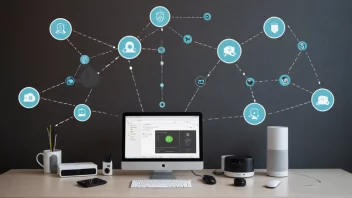Introduction
Non-profit organizations play a crucial role in our society, providing essential services and support to various communities. However, with the increasing reliance on technology and the internet, these organizations face significant risks regarding data privacy and security. Implementing effective data protection strategies is essential for safeguarding sensitive information and maintaining the trust of donors, volunteers, and beneficiaries. Below are the top 10 data protection strategies that non-profit organizations can adopt to enhance their data security.
1. Conduct Regular Data Audits
Understanding what data you have is the first step towards protecting it. Regular data audits help organizations identify sensitive information, assess its value, and determine how it’s being used. This process can also reveal vulnerabilities that need to be addressed.
2. Implement Strong Access Controls
Limiting data access is critical in preventing unauthorized use. Non-profits should establish strict access controls to ensure that only authorized personnel have access to sensitive data. This can include role-based access and the principle of least privilege.
3. Use Encryption for Sensitive Data
Encryption protects data both at rest and in transit. By encrypting sensitive information, such as donor details and financial records, non-profits can ensure that even if data is intercepted, it remains unreadable without the appropriate decryption key.
4. Educate Staff on Data Security Practices
Human error is a leading cause of data breaches. Providing regular training on data security best practices can empower staff to recognize potential threats and respond appropriately. Topics can include phishing awareness, password management, and secure data handling.
5. Develop a Data Breach Response Plan
Being prepared can mitigate the damage of a data breach. A comprehensive data breach response plan outlines the steps an organization should take in the event of a data breach, including communication protocols, investigation procedures, and remediation strategies.
6. Regularly Update Software and Systems
Keeping systems updated is essential for patching vulnerabilities. Non-profits should ensure that all software, including operating systems and applications, is regularly updated to protect against known security flaws that could be exploited by attackers.
7. Utilize Secure Data Storage Solutions
Choosing the right storage solution is vital for data security. Non-profit organizations should utilize reputable cloud storage providers that comply with data protection regulations and offer encryption, access controls, and backup options.
8. Monitor and Log Data Access and Usage
Monitoring data access can help detect suspicious activity. Implementing logging and monitoring systems enables organizations to track who accesses data and when, providing insights that can help identify potential breaches or misuse.
9. Assess Third-Party Risks
Organizations often rely on third-party vendors for various services. It’s essential to assess the security measures in place at these vendors and ensure they comply with your organization’s data protection standards to minimize risks.
10. Promote a Culture of Data Privacy
Data protection should be a core value within the organization. By fostering a culture of data privacy, non-profits can encourage everyone within the organization to prioritize data security in their daily operations and decision-making processes.
Conclusion
Data protection is vital for non-profit organizations to maintain the trust of their stakeholders and operate effectively. By implementing these top 10 strategies, non-profits can enhance their data security posture and reduce the risks associated with data breaches and privacy violations.






